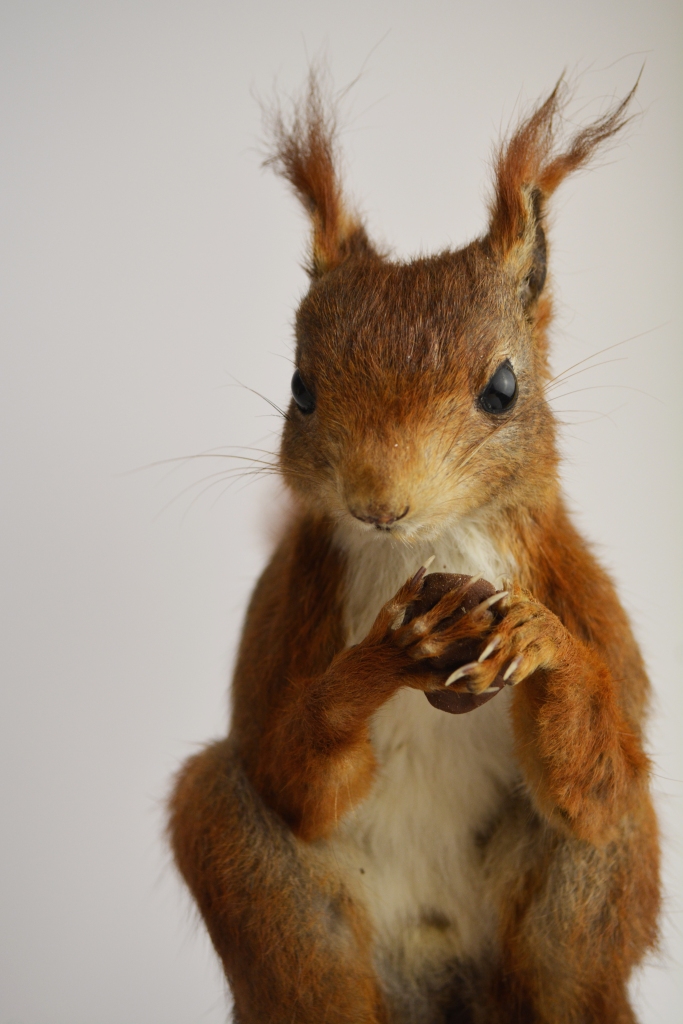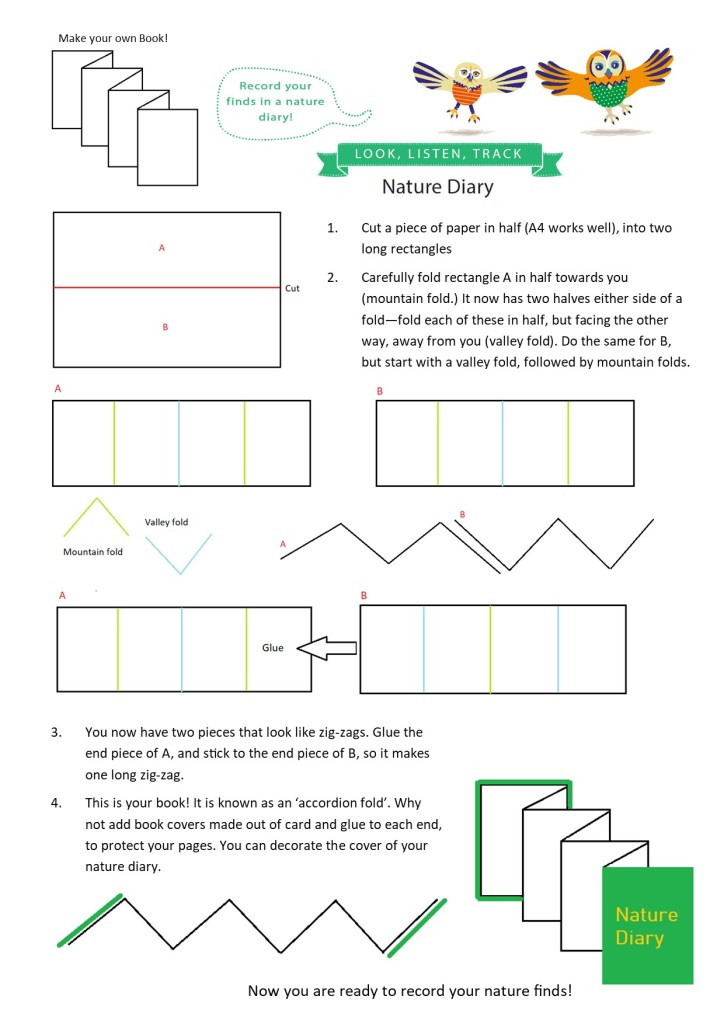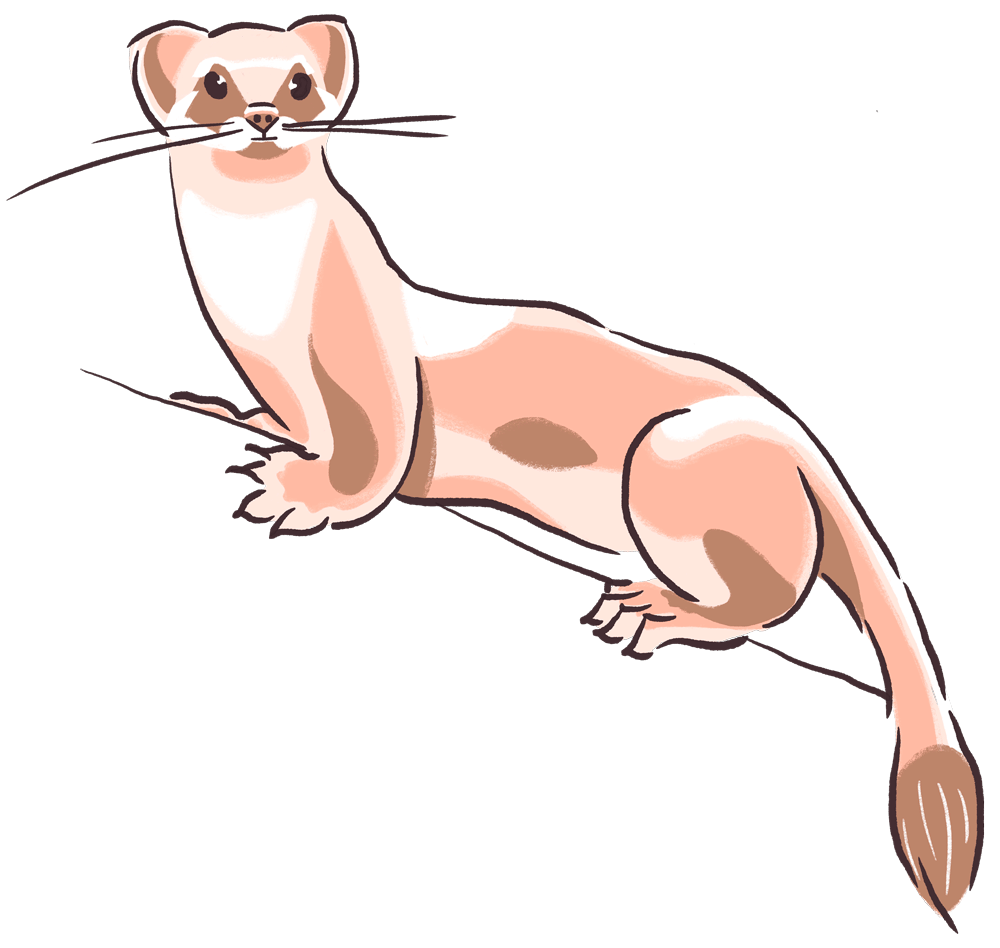How do you find an animal, if you can’t see the creature itself?
You need to know when and where to look! Knowing an animal’s habitat and behaviour patterns will mean you’ll be more likely to spot it. For example, some animals such as badgers are nocturnal, which means they are most active at night. They are also much more likely to stay in or near their woodland habitat. However, knowing this doesn’t always mean you can see them – they might still be hard to find. Another way is to learn how to track an animal – identify signs that show where the animal has been, such as footprints, droppings (poo), food debris, the gathering of bedding materials and entrances to their homes.

Hedgehog
Scientific name: Erinaceus europeaeus
Average life span: 3 years
Diet: Insects, plants, small mammals and amphibians. Hedgehog’s poo looks like small, dark sausages that often contain insect parts. Spotting this means a hog has been nearby!
Habitat: Woodlands, hedgerows, fields, parks, gardens. Look for light tracks in grass (try looking for trails through morning dew) or in mud and soft ground.


Grey Squirrel
Scientific name: Sciurus carolinensis
Average life span: 1-5 years
Diet: Nuts, seeds and berries
Habitat: Woodlands, urban areas. Look for the small feet with little pads, in a bounding pattern, on muddy or snowy ground near trees and bird feeders. They nest in trees by gathering loose bundles of sticks and leaves. The nest is called a drey; scratches on the tree bark and remnants of chewed pine cones on the floor below indicate this is a squirrel (and not a bird) nest.

Grey squirrels have double-jointed ankles, allowing their feet to face both forwards and backwards – a perfect adaption for tree climbing
Grey Squirrel (Sciurus carolinensis) – Woodland Trust
Squirrel facts
- The squirrels in the local area are tree squirrels but in total there are 200 different species of squirrel.
- You can find native squirrels in every continent except Antarctica and Australia.
- Their teeth grow for the whole of their lives which is very important for them because they are always chewing on things which would normally grind down their teeth.
- Whilst it is common knowledge that squirrels like to eat nuts, many people do not know that they are omnivores, meaning that they eat both plants and meat.
- The grey squirrels that can be seen all around this area are experts at finding the acorns they buried, and they normally find 80% of their hidden meals due to their incredible sense of smell. The 20% they do not find grow into new oak trees, so they are very useful creatures.
- Squirrels are most commonly recognised by their big fluffy tails and whilst this help to make them look like cute critters, their bushy tails also serve another helpful purpose – they help them keep their balance when climbing trees.
- Another thing that helps them climb trees is their flexible bodies which allow them to make quick turns and stretch out to further branches. They also have sharp claws which help them to grip the tree bark, even allowing to climb down trees headfirst.
- Squirrels are often found in local parks and wooded areas, the best time to see them in during autumn when the trees lose their leaves as the squirrels can be seen jumping between branches and climbing up and down the tree trunks. Often squirrels leave a lot of evidence behind when they have been in a tree or on the ground – chewed pinecones, gnawed bark and shells from nuts, making them easy to locate.
- In the UK there are also native red squirrels, but these are much rarer and harder to find. Red squirrels are an endangered species because there are not many of them left in the wild.

- Squirrels are born blind and without fur, they are born in nests in trees called dreys that can look very similar to birds’ nests. Only the mother squirrels look after the babies.

Robin
The famous robin red-breast! An iconic Christmas bird, the robin is actually present in our gardens and woodlands all year round. You will frequently hear this bird singing, as it is territorial and sings to defend its habitat.
Scientific name: Erithacus rubecula
Average life span: 2 years
Diet: Worms, fruit, seeds, insects
Habitat: Woodland, parks, gardens, hedgerows


Badger
Although badgers are nocturnal, there are lots of opportunities to spot this animal’s activity.
Scientific name: Meles meles
Average life span: up to 14 years
Diet: Insects, seeds, berries, eggs. Small amphibians, rodents, and birds.
Habitat: Woodland. Badgers burrow underground in homes called setts. Outside their sett they tend to toilet in one nearby area – if you find greasy, black, sausage-shaped poo in the woods, a badger sett may be nearby.

Earthworms are the core of the badger’s diet, often by as much as 60 per cent. In a single night, an adult badger may eat well over 200 worms!
Badger Trust
Ways to track wildlife living near you
Habitats: Depending on what sort of woodland creature you are looking for, you will want to look for the right habitat. For example, badgers live in setts, underground in woodland. You’ll need to look down at the ground in woods for signs of a hole in the ground, and for any signs of badger activity nearby. If you are looking for something that flies, they often live in nests or holes in trees; look up for sticks and leaves in branches or sticking out of a gap in the tree trunk.
Footprints: Carefully scan the ground; soft ground such as mud or snow works best for capturing footprints. Areas near bird feeders or water are a better chance for seeing tracks, as animals travel here to eat and drink.
Droppings: These can be very useful to identify which animal has been here. You will find these near food and water sources, or near the living areas of the animal.
Pellets: Birds, such as owls, regurgitate undigested food in pellets. These contain the bones and parts of small animals that cannot be ingested in the stomach. Owls roost in large trees in heavily wooded areas: look at the base of tall trees in the woods for pellets, a sure sign an owl is sleeping above!
Leftover food: Either the shells/cases of certain nuts and seeds, the cores of fruits, or remnants of of their food can be left both below/outside the living space of an animal or close to the food source.
Wildlife cameras: Once you’ve tracked where an animal is walking, sleeping or feeding, some people set up a wildlife camera to record the area over a period of days. Lots of amazing scenes have been captured in this way! It is a good way to learn more about animal behaviour without disturbing the creatures in their habitat too much.
Nature diaries
Why not make your own nature diary to record the plants and animals in your local natural environment? This could be in your garden, the trees at the end of your road, or your local woodland. You never know – your recordings might be valuable natural history data in the future! In the same way that we can look back and see how the environment has changed since records were made throughout history, future generations might learn about wildlife in 2021 from the descriptions of nature that you record.

Record in your own nature diary what you see, hear and find.
While on a nature walk you can collect in your diary an example of the trees, plants and signs of animals you find such as feathers, or you can draw them. Write down details so you know where you found it. There are helpful some suggestions and templates for making a nature diary below.
You can make your own logbook (we’ve included instructions on how to make a book using one sheet of paper), use a notebook, or try filling in one of our worksheets.

Look back over some of the Eton Scouts nature diaries for some inspiration!










4 replies on “Track”
[…] Find out how to spot a badger in TRACK! […]
LikeLike
[…] out how on the Track […]
LikeLike
[…] What else can you focus on? Look out for more senses to engage in LISTEN and TRACK […]
LikeLike
[…] Squirrel, exhibited in Track – Creatures of the Wild Wood. Eton Collections | NHM.744-2017 […]
LikeLike